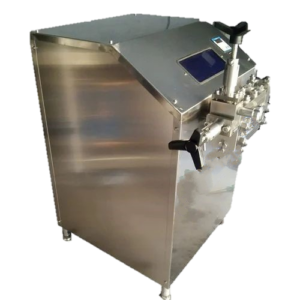PLANT GROWTH CHAMBER
Make Dinesh Scientific
DESCRIPTION
A controlled environment created to offer ideal growing conditions for plants is called a plant growth chamber, sometimes referred to as a phytotron or plant growth room. These chambers are utilized in plant biology, agriculture, and scientific research to examine how plants develop, physiology, and react to different environmental conditions. An overview of a typical plant growing chamber is provided below:
STRUCTURE:
ENCLOSURE: To restrict entry and leave, plant growing chambers are usually enclosed areas with controlled access points. Typically, the enclosure is composed of metal or other stable and insulating materials.
WINDOWS AND DOORS: While permitting researchers to observe and engage with the plants within, access doors and observation windows are made to cause as little disturbance as possible to the carefully regulated environment.
MANAGED ENVIRONMENTAL ELEMENTS:
CONTROLLING THE TEMPERATURE: To maintain precise temperature ranges ideal for plant growth, plant growth chambers are equipped with sophisticated temperature control systems. This might vary from warmer circumstances for tropical plants to colder temps for specific crops.
CONTROLLED HUMIDITY: To replicate natural conditions, humidity levels are adjusted. The growth chamber can be changed to accommodate the different humidity requirements of different plants.
LIGHTING: Artificial lighting systems that mimic sunshine are installed in growth chambers. Often, these lighting systems have spectral ranges that may be adjusted to replicate various solar phases and encourage photosynthesis.
CARBON DIOXIDE (CO2) MANAGEMENT: In order to maximize photosynthesis, which is essential for plant growth, CO2 concentration is regulated.
AIR CIRCULATION: The chamber’s gases, humidity, and heat are all distributed equally thanks to the maintenance of adequate air circulation. This is crucial for establishing a consistent environment in which plants can flourish.
ORGANIZING AND SHELVING:
SHELVING UNITS: To allow for various plant sizes and experimental configurations, the growth chamber’s interior is frequently constructed with movable shelving.
IRRIGATION SYSTEM: To guarantee that plants receive the right amount of water, some growth chambers are outfitted with automated or manual irrigation systems.
APPLICATIONS :
This chamber product is widely utilized for research purposes, including illuminating seedling germination and development as well as plant pathology research.
THE ECOCENTRIC SYSTEM:
Dewpoint control is the foundation of chamber operation. Fewer deviations when there is a brief power outage and door opening. smaller utility space more space for storing. minimal running costs. minimal use of water and electricity. decreased variances. Reduced malfunctions because to the humidification and standby refrigeration systems. The efficiency of this system is boosted with less energy consumption and the on time of the temperature and humidity systems is decreased thanks to PLC HMI & controlling through microprocessor based PID temperature and humidity operations.
FEATURES :
- Easy to move PU wheels that lock and rotate, forced air circulation to maintain a constant temperature, Transportable, chamber fixed with castors.
- Integrated temperature. deviation and visual/auditory alerts.
- Safety thermostat to prevent temperature overshooting. a safety circuit to turn the entire system off.
TECHNICAL DETAILS:
| MODEL | DS-PGC-100 |
| plant growth height | 23-25 cm on each tier with 4″ increments |
| Interior construction | 22-gauge electro-zinc plated steel |
| Cooling system | · Self-contained air-cooled condensing unit with hot gas bypass system for closed temperature control
· Prolonged compressor life, and continuous operation |
| Exterior construction | 18-gauge exterior electro-zinc plated steel |
| Door lock | Digital or with key |
| Troubleshooting | On-board diagnostics |
| Solenoid valves | Extended stem for quiet and long-life operation |
| System type | Plug and play with one access port/fresh air-port |
| Power features | Memory protection with an integrated battery and auto-restart feature in the event of a power outage |
| Provided growing area | Work area of 0.8 m² or more |
| Controller Safety & Security | Four levels of protection |
| Light intensity control | The light irradiance on each shelf, measured at six inches from LEDs, may be programmed using a real-time controller to range from 10–100% and 100–125 µmoles/m²/s. Three shelves have a horizontal light canopy. |
| Temperature range | +5° to +44°C with ±0.5°C accuracy in Light ON condition |
| Temperature monitoring | · built-in ambient temperature monitoring system that alerts users visually and audibly to temperature deviations.
· Both high and low. Auto-shutdown and auto-restart functionality upon alarm. |
| Additional equipment | RH meter included |
| Electrical supply | 220-230V electrical supply (Servo Voltage Stabilizer included/provided) |
| Program Methods | Ramping and non-ramping |
| Program Linking | It is possible to link multiple programs together to construct intricate sequences that mimic natural settings. |
| Program Configuration | Can be configured to run in real-time or elapsed time |
| Dual Experiment Protection | · Integrated yet independent temperature limit shutdown
· Auto-restart when temperature normalizes |
| Delay Timer | Delays the start of the unit in case of power failure |
| Controller | Touch pad controller |
| Calibration Offsets | Each input channel has two calibration offsets: one for lights-on and another for lights-off. |
| Program Features | · Multi-step, daily, and continuous programs
· Storage of many programs with a multi-step function |












Reviews
There are no reviews yet.